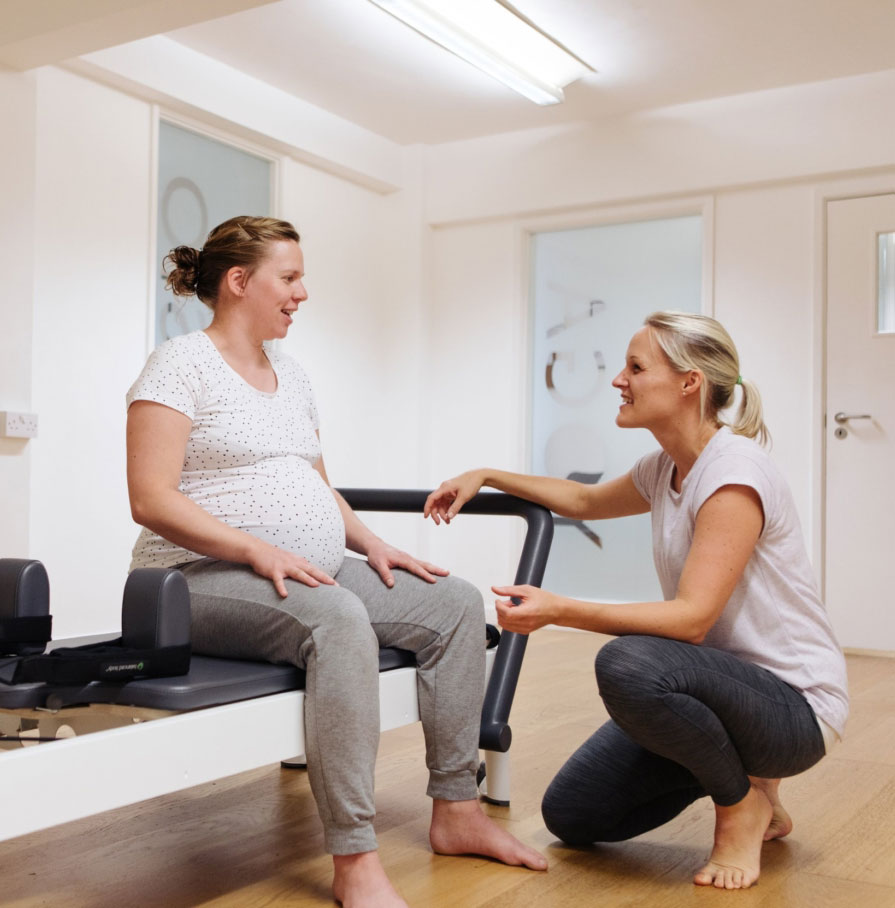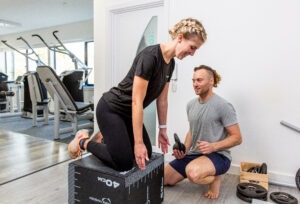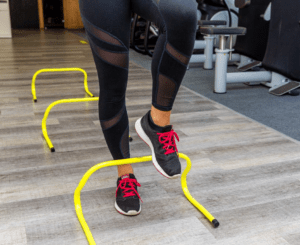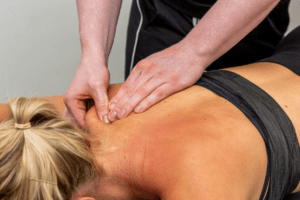Introduction:
What is Diastasis Recti?
Diastasis recti is a condition that occurs when the rectus abdominis muscles separate due to the stretching of the connective tissue, leaving a gap in the abdominal wall. This can occur in men and women due to various factors but the most common reason is post-pregnancy and this will be the focus of this blog.
While it’s a natural part of the pregnancy process, as the lengthening of the abdominal muscles and the stretching of the linea alba allows the baby and the uterus to grow and develop. This process is also influenced by the hormones relaxin and progesterone. The amount of separation varies from one women to another. Diastasis recti usually takes around 8 weeks post-delivery to improve. Research that approximately 45% of postnatal women have diastasis at 6 months post-delivery of their baby However, this separation can persist in approximately one in three women.
What is the Linea Alba:
Your abdominal wall consists of four muscular layers which are all attached to a fibrous band of connective tissue called the linea alba. The Linea alba runs down the centre of your tummy from the bottom for your breast plate to your pubic bone. Diastasis recti results in the thinning and widening of the linea alba.
What are the common symptoms of Diastasis Recti?
- You may notice some doming along the midline when you move from sitting to lying, straining or lifting
- Lower back pain
- Constipation
- Bloating
- Decreased strength and function of your abdominals
What are the risk factors for persistent problems?
- Having Twins
- Chronic straining (coughing, constipation, vomiting)
- Family history of Diastasis Recti
- Heavy lifting, particularly with poor techniques (holding your breath when lifting)
- Excessive abdominal loading
How do you complete a Self assessment?
Here is a step-by-step guide to how to assess your diastasis Recti
- Lie on your back with your feet flat on the floor with your knees bent.
- Place your fingers in a horizontal line in the centre of your abdomen, just above the belly button.
- Tuck your chin down onto your chest and round your shoulders forward slightly
- off the floor/bed. This will increase the tension in your abdominal muscles. This is not a sit-up.
- Gently try to feel the edges of your abdominal muscles (it can be difficult to know what you’re feeling and if you are unsure, you can ask your midwife, physiotherapist or GP for advice).
- With this increased tension, assess how many fingers fit into the gap between the two bands of muscles.
It’s important to note that a separation of 2-3 fingers is normal. There may be a wider gap immediately after the birth of your baby is also to be expected at this stage.
Early Postnatal Tips for Diastasis Recti:
- Allow your body to heal during the first 4-6 weeks. The separation should reduce naturally during this time.
- Try to avoid carrying heavy loads. If this is unavoidable, then you should try to hold the load as close to you as possible. Tighten your abdominal muscles and pelvic floor and bend your knees.
- When getting into bed, lower yourself down on your side then roll onto your back. When getting out of bed, roll onto your side and push up using your arm.
- Manage constipation and avoid foods that cause bloating to help to decrease abdominal pressure.
Can you Exercise with Diastasis Recti?
Absolutely! In fact, exercising can be beneficial for healing diastasis recti, but it’s crucial to approach it with caution and follow the right exercises. Gentle and targeted workouts can help strengthen the core muscles, supporting the healing process. The key is to focus on exercises that engage the deeper core muscles without putting excessive strain on the abdominal wall. Avoid traditional crunches and intense abdominal workouts initially, as they may exacerbate the condition. Instead, opt for diaphragmatic breathing, pelvic tilts, and modified planks to gradually rebuild core strength. Listen to your body, and if you experience any pain or discomfort, modify or discontinue the exercise. It’s a journey of gradual progress, so be patient and consistent. With the right guidance and appropriate exercises, you can safely exercise with diastasis recti and support your body’s healing process and maintain your general health and fitness.
What Exercises can I do and how do I know I’m safe?
Consultation with a Health professional:
Before starting any exercise routine, it’s crucial to consult with a physiotherapist who can assess the severity of diastasis recti, discuss your specific goals and symptoms and provideyou with a personalised plan with recommendations going forwards.
Diaphragmatic Breathing:
Diaphragmatic breathing helps engage the transverse abdominis, the deep abdominal muscle that supports the core. Lie on your back, place one hand on your chest and the other on your abdomen. Inhale deeply through your nose, expanding your abdomen, and exhale slowly through pursed lips.
Pelvic Tilts:
Perform pelvic tilts to strengthen the pelvic floor and transverse abdominis. Lie on your back with knees bent and feet flat on the floor. Tighten your abdominal muscles, pressing your lower back into the floor and hold for a few seconds before releasing.
Modified Planks:
Start with modified planks to avoid excessive strain on the abdominal muscles. Get into a plank position with your forearms on the ground, keeping your back straight. Engage your core muscles and hold the position for a few seconds, gradually increasing the duration as your strength improves.
Leg Slides:
Lie on your back with knees bent and feet flat on the floor. Slowly slide one leg out, keeping the foot on the ground, and then bring it back to the starting position. Alternate legs, focusing on engaging your core muscles.
Seated Exercises:
Opt for seated exercises like seated marches or seated leg lifts. Sit on the edge of a chair, engage your core, and lift one knee at a time, gradually increasing the intensity.
Avoid Traditional Crunches:
Traditional crunches can worsen diastasis recti. Instead, focus on exercises that engage the core without putting excessive strain on the abdominal muscles.
Low impact cardio:
Exercises such as walking, swimming, elliptical and cycling are good exercises to train your cardiovascular health that do not cause too much strain or tension on the abdominal muscles.
Conclusion:
Healing diastasis recti requires patience and consistency. Incorporate these gentle exercises into your routine, listen to your body, and progress at a pace that feels comfortable. It’s always advisable to seek professional guidance to ensure a safe and effective recovery. With dedication and proper exercise, you can regain core strength and overcome diastasis recti and return to your normal activities.



